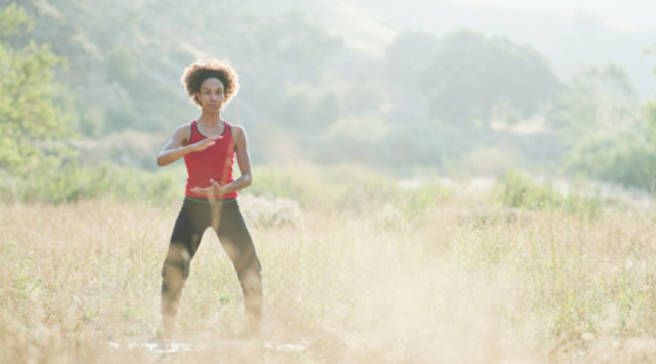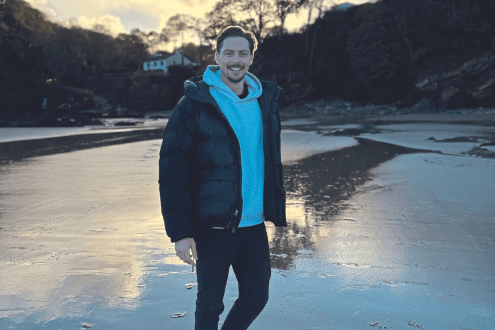The potential of ta’i chi
Does the Eastern discipline of ta’i chi have the power to transform the way we view and project our (inner) energy in the West?

Patricia’s face lights up. Holding her hands about three inches apart, she feels a force of resistance between them, like two magnets in opposition. ‘That’s the chi. When you’ve felt it once, you become very aware of it,’ explains our t’ai chi instructor. I’m fascinated and yet a little disappointed that I don’t feel anything myself.
Andrea, who took up t’ai chi 25 years ago, is another enthusiast. ‘I started very late, at the age of 50. I was a chemist, and at first it all seemed a bit woolly. I couldn’t see the science behind it,’ she explains to us, almost apologetically. I watch her graceful carriage, her measured strength, her supple movements with admiration.
Something simple radiates from her, a beauty that transcends her 75 years. She turns her upper body from left to right, while her hands move slowly in front of her as if floating on water. ‘Let them slide along the surface of the chi belt that surrounds you,’ the master encourages us. I follow as best I can, but my movements are hesitant and clumsy. Maybe it’s because I simply have no sense of the ‘chi belt’ he’s talking about.
Simon, 45, runs a PR company. He took up t’ai chi several years ago. ‘It gives me inner peace,’ he tells me. ‘When I became aware of this tangible energy – energy that we all have within us – I felt connected to the rest of the world.’
As I stand watching Patricia, Andrea and Simon, I wonder what to make of all these experiences. If this extraordinary energy really does exist, why do so many people go through life without ever feeling it?
In Asian cultures, the notion of chi is part of everyday life. Every morning across China, Taiwan and Hong Kong, the public parks are filled with these slow, majestic movements, as millions of human beings all connect to their chi. In the US and Australia, studies have confirmed the positive effects of t’ai chi on our health.
One hour of practice is equivalent to an hour’s bracing walk in the country. Doing it twice a week would be enough to sustain the benefit between sessions. Those who took part in the study – people who, for the most part, did no exercise and led sedentary lives – noticed a marked improvement in their physical wellbeing.
And the more unfit they were to begin with, the greater the effect.
But what should we make of this chi? This energy that science can’t detect, yet our minds and our hands can learn to feel? In the US, an experiment carried out by Dr Yue of the Cleveland Clinic produced surprising results. For one 15-minute session a day, over a three-month period, participants imagined that one of their fingers was getting stronger. Using no muscles at all, just the power of their imagination, they visualised their ring finger pushing a heavy object sideways. At the end of the trial period, the physical strength of the finger had increased by 35 per cent. An entirely physical result had been obtained by the power of the mind alone.








